Cleaning acrylic brushes is an essential yet often overlooked aspect of maintaining an artist’s toolkit. Acrylic paints, known for their vibrant colors and fast-drying properties, can be particularly harsh on brushes if not cared for properly.
Neglecting regular cleaning can lead to bristle damage, loss of shape, and diminished painting performance.
This guide provides a comprehensive step-by-step approach to effectively cleaning acrylic brushes, ensuring their longevity and optimal functionality.
By following these methods, artists can not only extend the life of their brushes but also enhance the quality of their artwork by preventing color contamination and preserving the integrity of their tools.
Explore the following steps to discover how to keep your acrylic brushes in pristine condition.
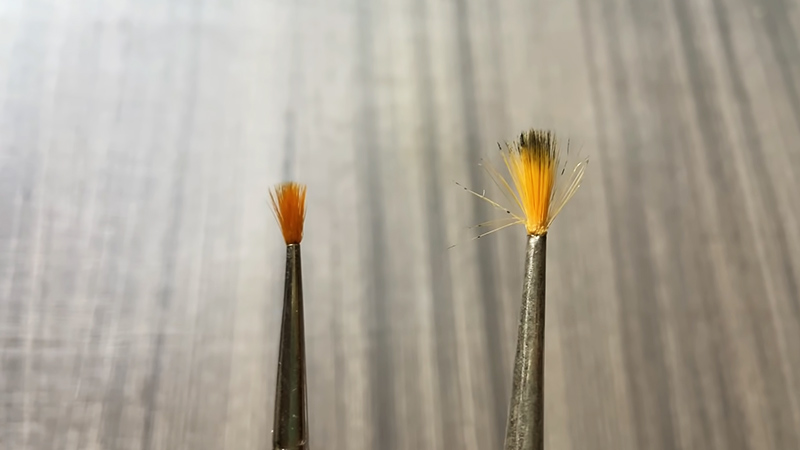
7 Easy Steps to Clean Acrylic Brushes
Cleaning acrylic brushes is essential to maintain their quality and extend their lifespan. Acrylic paint can be particularly tough on brushes due to its fast-drying nature, but with proper care, you can keep your brushes in excellent condition.
Here’s a step-by-step guide on how to clean acrylic brushes effectively:
Materials You’ll Need:
- Used acrylic brushes
- A container or jar
- Mild soap
- Lukewarm water
- Paper towels or a clean cloth
- Brush conditioner or hair conditioner
- An old toothbrush
Step 1: Rinse Out Excess Paint
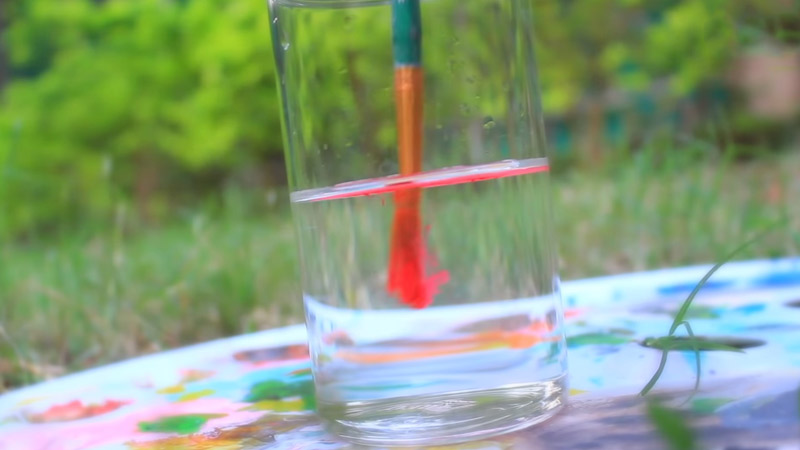
When you finish a painting session with acrylics, it’s crucial to act quickly. Acrylic paint dries fast, and if it dries on your brushes, it can be challenging to remove. First, gently wipe off any excess paint from the bristles using a paper towel or a rag.
Then, immediately rinse the brushes in a container of lukewarm water. Swirl the brushes around gently to loosen and remove as much paint as possible. Avoid using hot water, as it can set the paint and make it harder to clean later.
Step 2: Prepare the Cleaning Solution
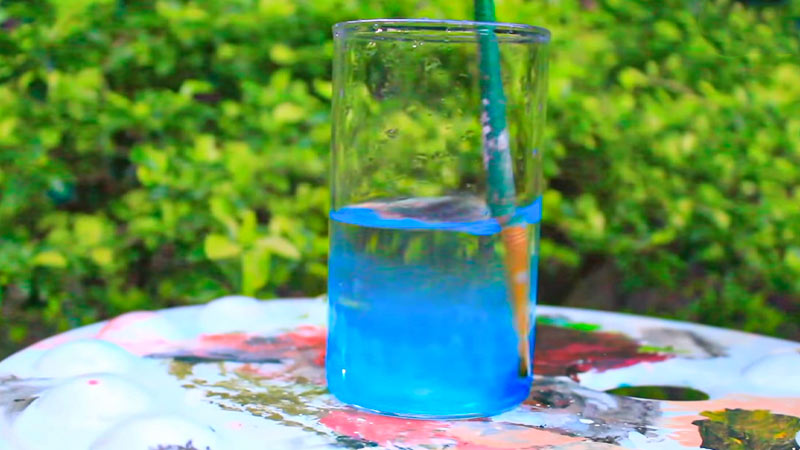
To create a suitable cleaning solution, fill a container or jar with lukewarm water. Add a small amount of mild soap or acrylic brush cleaner to the water.
You don’t need a lot of soap; just a few drops should suffice. The soap will help break down the acrylic paint residue and make it easier to clean.
Step 3: Soak the Brushes
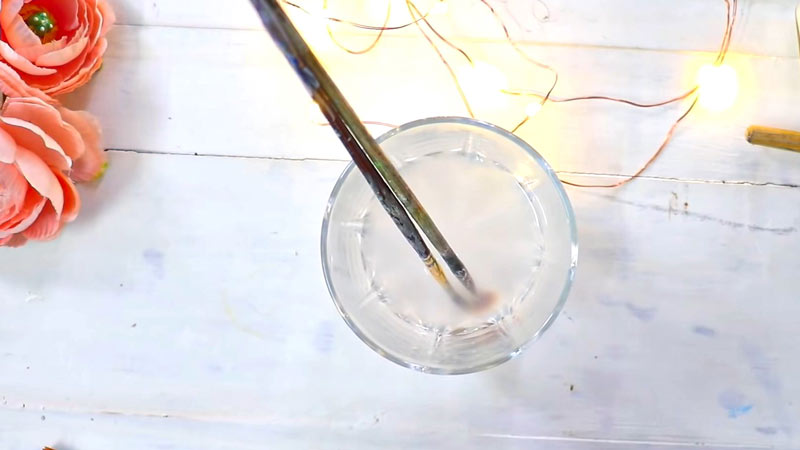
Carefully immerse the paintbrushes into the soapy water, ensuring that the bristles are fully submerged. Allow them to soak for a few minutes. This soaking process is essential, as it gives the soap time to loosen the dried paint and make it easier to remove later.
Step 4: Gently Agitate the Bristles
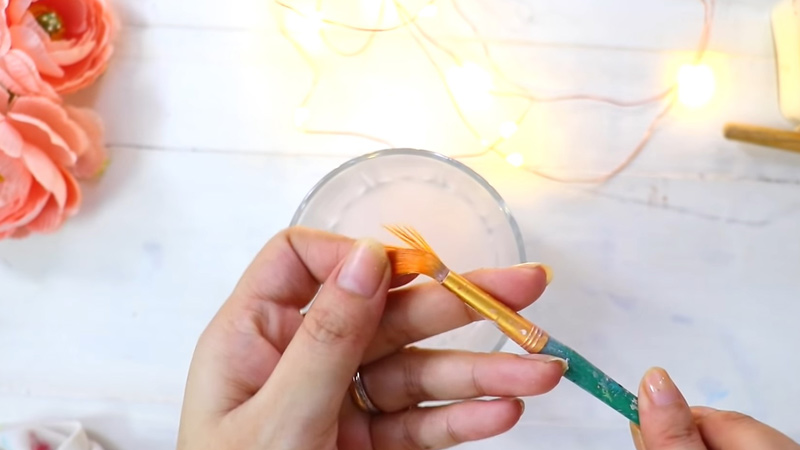
After the brushes have soaked for a few minutes, gently agitate the bristles with your fingers. Use a circular motion to help dislodge any remaining paint particles.
You can also use an old toothbrush to assist in removing stubborn paint that might be trapped near the base of the bristles. Be gentle to avoid damaging the bristles.
Step 5: Rinse Thoroughly
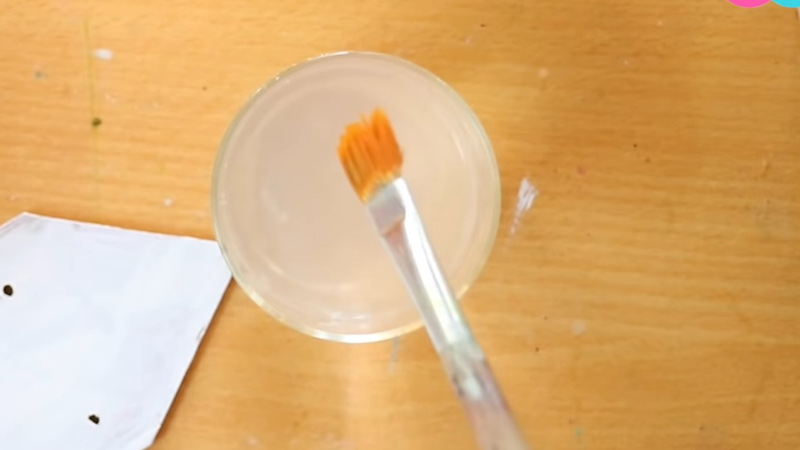
Once you’ve agitated the bristles and loosened the paint, it’s time to rinse the brushes under lukewarm running water.
Continue to gently squeeze and agitate the bristles while rinsing to ensure that all soap and paint residues are completely removed. Keep rinsing until the water runs clear, indicating that the brushes are clean.
Step 6: Condition
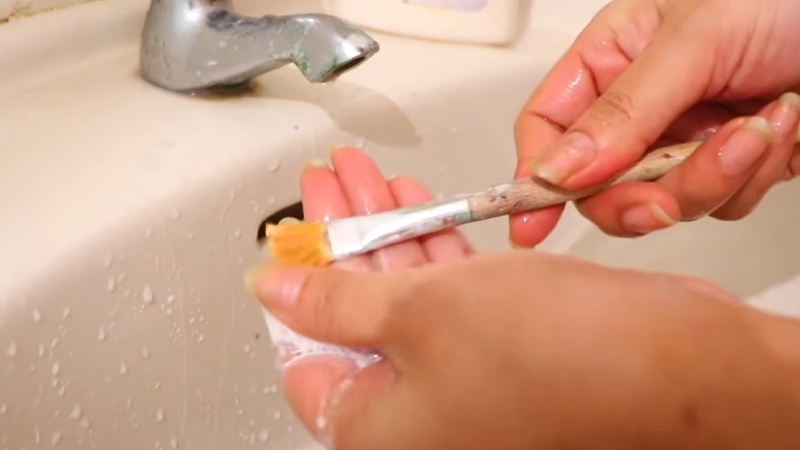
If your brushes feel stiff or dry after cleaning, you can use a brush conditioner or a small amount of hair conditioner. Apply a tiny amount to the bristles and gently work it in with your fingers.
This conditioning step can help keep the bristles soft and prevent them from becoming brittle over time. Be sure to rinse thoroughly after conditioning if you choose to do so.
Step 7: Shape and Dry
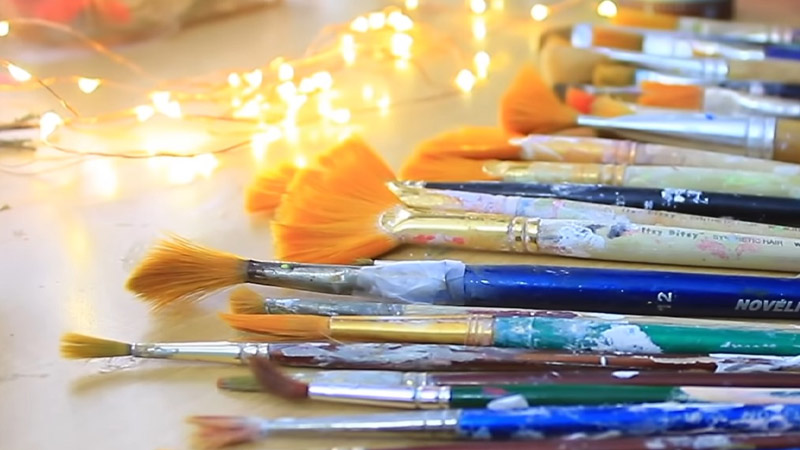
After rinsing, gently reshape the brush bristles to their original form with your fingers. It’s essential to lay the brushes flat on a clean cloth or paper towel to dry.
Make sure they are not resting on their bristles, as this can cause them to lose their shape or become misshapen.
Avoid using a hairdryer or exposing the brushes to direct heat, as excessive heat can damage the bristles and the brush handles.
How to Clean Acrylic Paint Brushes With Vinegar?
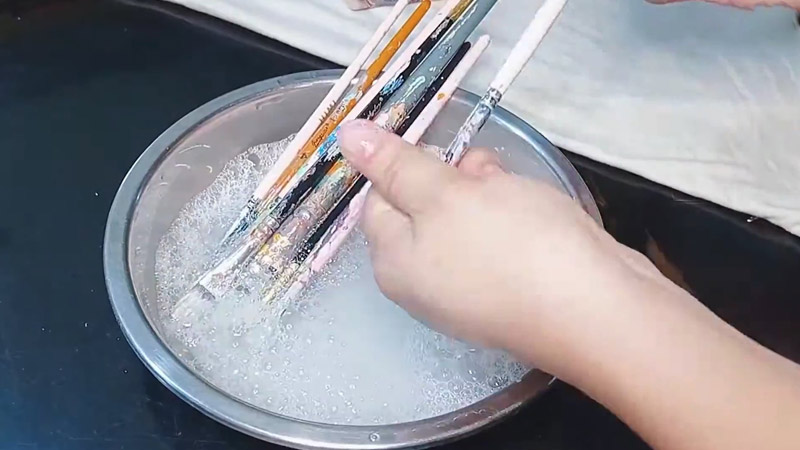
Cleaning acrylic paint brushes with vinegar is an effective and natural method that helps remove paint residue while also disinfecting and softening the bristles.
Here’s a step-by-step guide on how to clean acrylic paint brushes using vinegar:
Materials You’ll Need:
- Dirty acrylic paint brushes
- White vinegar
- A container or jar
- Lukewarm water
- Mild soap (optional)
- Paper towels or a clean cloth
- Brush conditioner or hair conditioner (optional)
Step 1: Rinse Out Excess Paint
Before you start the cleaning process, gently wipe off any excess paint from the bristles using a paper towel or a rag.
Removing as much paint as possible at this stage will make the cleaning process more effective and prevent the paint from drying on the brushes.
Step 2: Prepare the Vinegar Solution
In a container or jar, pour white vinegar to create a solution for soaking your brushes. You don’t need a large amount; just enough to submerge the bristles. White vinegar is preferred for its mild acidity, which helps break down acrylic paint.
Step 3: Soak the Brushes in Vinegar
Immerse the dirty brushes fully into the white vinegar, making sure that the bristles are completely covered.
Let them soak for approximately 30 minutes to an hour. During this time, the vinegar will work to loosen and dissolve the dried paint.
Step 4: Gently Agitate the Bristles
After the soaking period, gently agitate the bristles with your fingers. Use a circular motion to help dislodge any remaining paint particles.
Stubborn paint near the base of the bristles can be addressed by using an old toothbrush. Be gentle to avoid damaging the bristles.
Step 5: Rinse Thoroughly
Remove the brushes from the vinegar and rinse them thoroughly under lukewarm running water.
Continue to squeeze and agitate the bristles during rinsing to ensure that all traces of vinegar and paint residues are completely washed away. Rinse until the water runs clear.
Step 6: Wash with Mild Soap
If you want to ensure that no vinegar or paint residue remains on the brushes, you can wash them with a mild soap.
Create a lather by gently massaging the soap into the bristles, then rinse thoroughly with lukewarm water. This step can provide an extra layer of cleanliness.
Step 7: Condition
To maintain the softness of the bristles and prevent them from becoming stiff or brittle, consider applying a brush conditioner or a small amount of hair conditioner.
Gently work the conditioner into the bristles, then rinse thoroughly. Conditioning is optional but can extend the lifespan of your brushes.
Step 8: Shape and Dry
After cleaning, gently reshape the brush bristles to their original form with your fingers. Lay the brushes flat on a clean cloth or paper towel to dry. Ensure they are not resting on their bristles, as this can cause them to lose their shape.
Avoid using a hairdryer or exposing the brushes to direct heat, as this can damage the bristles and handles.
How to Remove Acrylic Paint From Paint Brush?
Removing dried acrylic paint from paint brushes can be a bit challenging, but with the right technique, you can restore your brushes to their original condition.
Here’s a step-by-step guide on how to remove acrylic paint from paint brushes:
Materials You’ll Need:
- Dried acrylic paint-covered paint brushes
- A container or jar
- Vinegar or rubbing alcohol
- Mild dish soap
- Lukewarm water
- A wire brush or comb
- Paper towels or a clean cloth
- Brush conditioner or hair conditioner
Step 1: Scrape Off Excess Paint
Start by gently scraping off as much dried acrylic paint as possible from the bristles using a wire brush or comb. Be careful not to damage the bristles during this process.
Step 2: Prepare a Cleaning Solution
Fill a container or jar with vinegar or rubbing alcohol. Either of these solvents can help break down the dried acrylic paint. Ensure that there is enough solvent to submerge the bristles.
Step 3: Soak the Brushes
Submerge the paint-covered brushes into the container filled with vinegar or rubbing alcohol. Make sure the bristles are fully covered. Allow them to soak for several hours or overnight. The longer you soak, the better the results will be.
Step 4: Gently Agitate the Bristles
After soaking, use your fingers to gently agitate the bristles. This helps to loosen the paint. You can also use a wire brush or comb, but be cautious not to apply too much pressure, as it could damage the bristles.
Step 5: Rinse with Lukewarm Water
Remove the brushes from the vinegar or rubbing alcohol and rinse them thoroughly under lukewarm running water. Continue to gently squeeze and agitate the bristles to remove any loosened paint particles. Rinse until the water runs clear.
Step 6: Wash with Mild Dish Soap
Create a lather by washing the bristles with mild dish soap and lukewarm water. Use your fingers to gently massage the soap into the bristles. Rinse thoroughly.
Step 7: Condition
To maintain the softness of the bristles, you can apply a brush conditioner or a small amount of hair conditioner. Gently work it into the bristles, then rinse thoroughly. Conditioning is optional but can help keep the bristles in good condition.
Step 8: Shape and Dry
After cleaning, reshape the brush bristles to their original form with your fingers. Lay the brushes flat on a clean cloth or paper towel to dry.
Ensure they are not resting on their bristles, as this can cause them to lose their shape. Avoid using a hairdryer or exposing the brushes to direct heat.
Types of Acrylic Paint Brush Cleaner
There are several types of acrylic paint brush cleaners available on the market, each with its own unique features and advantages.
Here are some common types of acrylic paint brush cleaners:
Solvent-Based Brush Cleaners
- Mineral Spirits: These are a common choice for cleaning acrylic brushes. They are effective in removing paint residue and can be used with both oil-based and acrylic paints. However, they have a strong odor and should be used in a well-ventilated area.
- Turpentine: While primarily used for oil paints, turpentine can also be used to clean acrylic brushes. It’s effective but has a strong odor similar to mineral spirits.
Water-Based Brush Cleaners
- Soap and Water: A mild soap and lukewarm water solution is a gentle and accessible way to clean acrylic brushes. It’s effective for removing wet acrylic paint. Look for brush soaps specifically designed for artists, as they are formulated to protect bristle integrity.
- Acrylic Brush Cleaners: There are commercial acrylic brush cleaners specifically formulated for removing acrylic paint residues. They are water-based and are designed to condition and extend the life of brushes. They often have low or no odor.
DIY Brush Cleaners
- Vinegar: White vinegar can be used to soften and remove acrylic paint from brushes. It’s a natural and cost-effective option.
- Rubbing Alcohol: Isopropyl alcohol can help dissolve acrylic paint, but it should be used sparingly as it can be harsh on brush bristles. It’s best for stubborn dried paint.
Brush Cleaning Accessories
- Brush Cleaning Mats: These textured silicone mats have grooves and ridges designed to help agitate paint from brush bristles when used in conjunction with a cleaning solution.
- Brush Cleaning Tanks: Some artists use brush cleaning tanks, which are containers with a series of ridges or grids that help loosen paint from brushes when you rub them back and forth.
Environmental-Friendly Options
- Bio-Based Cleaners: Some eco-conscious artists prefer bio-based brush cleaners made from natural ingredients that are less harmful to the environment.
- Water Filtration Systems: These systems help artists safely dispose of water used for cleaning brushes by filtering out paint particles, making it safe to dispose of down the drain.
FAQS
Can I use regular household vinegar for cleaning acrylic brushes?
Yes, you can use regular white vinegar commonly found in households for cleaning acrylic brushes.
Is it safe to use a microwave to clean acrylic brushes?
No, it is not safe to use a microwave to clean acrylic brushes.
What should I do if I accidentally left my acrylic brushes with dried paint for a long time?
If your acrylic brushes have been neglected with dried paint for an extended period, you can try soaking them in a mixture of vinegar and water for an extended time, even overnight, to help soften and remove the paint.
Can I use a brush spinner or cleaner for acrylic brushes?
Yes, brush spinners and cleaners are useful tools for quickly and efficiently remove excess paint and cleaning solution from brushes.
To Recap
Mastering the art of cleaning acrylic brushes is an essential skill for artists who work with this versatile medium. Neglecting proper cleaning can lead to bristle damage and compromise the quality of your artwork.
Whether you’re dealing with wet or dried paint, the right cleaning method can significantly extend the lifespan of your brushes.
From the use of gentle soap and water to the effectiveness of vinegar and commercial brush cleaners, each technique has its place in the artist’s toolkit.
Regular maintenance ensures that your brushes remain supple, reliable, and ready to bring your artistic visions to life.
By following these steps, you not only preserve your brushes but also enhance your painting experience and the longevity of your creations.
Leave a Reply